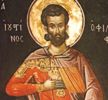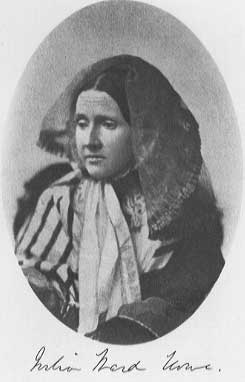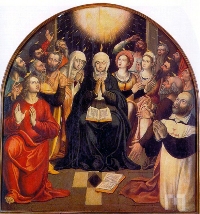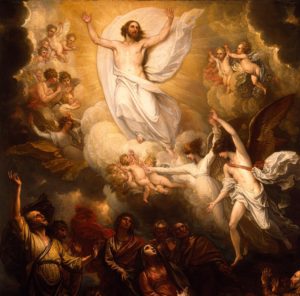End of American Unitarian Reform Blog
 This blog is being discontinued, but old posts may be republished for holidays.
This blog is being discontinued, but old posts may be republished for holidays.
Apologies for the inconvenience. Thank you for reading, and may God bless.
 This blog is being discontinued, but old posts may be republished for holidays.
This blog is being discontinued, but old posts may be republished for holidays.
Apologies for the inconvenience. Thank you for reading, and may God bless.
 In honor of St. Justin, today we re-post a selection of quotes from his writings, originally posted in 2008.
In honor of St. Justin, today we re-post a selection of quotes from his writings, originally posted in 2008.
Justin is important not only because his feast day begins the 12 Days of Unity, the “Bud Dozenal” of the Spring Rose Season, but because Justin is the earliest writer explaining and defending the theology of Christianity as if to an outsider.
 This year’s Ultimate Thursday of the 12 Days of Thorns falls on the birthday of Julia Ward Howe, a Unitarian best known for writing the lyrics to The Battle Hymn of the Republic, a march calling the righteous abolitionist to war.
This year’s Ultimate Thursday of the 12 Days of Thorns falls on the birthday of Julia Ward Howe, a Unitarian best known for writing the lyrics to The Battle Hymn of the Republic, a march calling the righteous abolitionist to war.
And, the spirit of militant abolitionism — which finally crushed the slave economy after decades of impotent pacifist abolitionism satisfied its own sentimentality while the slaves suffered in bondage — is perfectly congruous with the lesson of this dozenal. There can be no moral success, no advance of justice, without trial and tribulation.
Those seeking the easy way out of injustice will usually instead find no way out.
Unfortunately, after the War of Liberation, Ms. Howe reverted to the pacifism that had for so long shackled abolitionism, and kept generations of African Americans shackled along with it. Even so, the words of her Hymn still ring true for those who seek justice, truth, and freedom with open eyes. Continue reading
 On the second Sunday following Ascension Thursday falls the Pentecost, originally a Hebrew harvest festival known as Shavuot (חג השבועות, “Festival of Weeks”) or the Day of First Fruits. It is also called White Sunday in some Northern European countries.
On the second Sunday following Ascension Thursday falls the Pentecost, originally a Hebrew harvest festival known as Shavuot (חג השבועות, “Festival of Weeks”) or the Day of First Fruits. It is also called White Sunday in some Northern European countries.
As often happens, this year the Pentecost dozenal falls inside Rose Season. But even though Unitarian Reform is more focused on the 12 Days of Thorns this year, Pentecost is still an important holiday, the afterword of the Lent-Ascension cycle.
Meaning of the Season. In Judaism, this day commemorates the descent of the Law on Mt. Sinai, but in Christianity it commemorates the descent of the Holy Spirit on followers of Jesus. Taken together, these two express the complementary virtues that are the underlying theme of Abrahamic spirituality — Faith and Hope, Law and Wisdom, Son and Spirit, Lion and Lamb, Serpent and Dove, the Two Trees of Knowledge and Life — the same complementary virtues displayed on Ascension Thursday.
In both cases, a great flowering resulted. Just as the Jewish people were bound by the physical ties of tribe and family, Christians are bound by the mental ties of concept and idiom. So, in Jewish tradition, Mt. Sinai became covered in blooms and greenery after the Law was revealed, a material flowering. In Christian tradition, the descent of the Spirit resulted in the crowds in Jerusalem being able to understand the Gospel in their own languages, a mental flowering.
For Reform Unitarianism, these parallel revelations on Shavuot/Pentecost represent a great reconciliation of complementary goods: punitive Law which outlines strict rules of conduct to protect us from the perils of the material world, and benevolent Wisdom which over-rules the obstacles of language to protect us from the perils of ideology and cultural/linguistic isolation.
[An earlier version was published on previous Pentecost Sundays]
Today is the first of the 12 Days of Thorns, during which we contemplate the tragic errors of the past. This dozenal opens the Spring Interval, also called the Rose Season.
The first Day of Thorns is Lucifer’s Day, marking the anniversary of the First Council of Nicaea in which the Josiac error of conflating the Son and God was repeated.
This is also the traditional feast day of Lucifer Calaritanus — whom some Trinitarians honor as “Saint Lucifer” — one of the principle proponents of the conflationist error against Christian monotheism.
An excellent case study in partisan hypocrisy, Lucifer is famous for publishing two works advising Emperor Constantius not to meet with Arians nor forgive them, yet also a work advising the Emperor not to condemn the conflationist bishop Athanasius of Alexandria in absentia.
On this day, we should not only lament the unravelling of the original Church, but also contemplate the beams in our own eyes, that we do not follow where Nicaea and Lucifer transgressed.
 The Twelve Days of Commission conclude today in the Ascension of Jesus. This feast day is one of the Four Great Thursdays of AUR, the other three being Garden Thursday, Declaration Thursday, and Harvest Thursday.
The Twelve Days of Commission conclude today in the Ascension of Jesus. This feast day is one of the Four Great Thursdays of AUR, the other three being Garden Thursday, Declaration Thursday, and Harvest Thursday.
Ascension commemorates the return of Jesus to Heaven between two angels. This imagery places a final seal on the importance of reconciled, complementary virtues to Christian morality by closing Jesus’ time on Earth with symbolism that echoes a consistent theme throughout religion, both Christian and otherwise.
For example, in the book of Numbers, we read that the Word of God came to the Jews from between the two angels on the “Reconciler,” a device which sat atop the Ark of the Covenant.
Medieval Jewish theologian Moses Maimonides explained that these two angels on the Ark represented the punitive and beneficent aspects of God, reconciled in God’s Unity.
This moral message of reconciled virtues can also be seen symbolically in the prophecy of Isaiah that the Anointed returns when the wolf and the lamb, the leopard and the kid, and the lion and the calf lie down together.
In the Christian idiom are repeated lessons in reconciled, complementary virtues: Law and Wisdom reconciled in true religion, Faith and Hope reconciled in Divine Love, the shrewdness of serpents and the innocence of doves reconciled in the attitude of a true Christian.
Justice and mercy, strength and kindness, the arrow and the olive branch: these are the yin and yang of the Abrahamic idiom. Only together and reconciled are these virtues; apart and partisan, they become the vices of Beast and Babylon, rage and lust, violence and libertinism, authoritarianism and anarchy.
The Reconciling Word of God, manifest in Jesus of Nazareth, returned to Heaven between two angels representing the benevolent and punitive aspects of God, angels who appeared beside him echoing the cherubim of the Ark. It is this image, and its rich spiritual meaning, that we commemorate on Ascension Thursday.
[A version of this homily was published on a previous Ascension Thursday.]
 Today is Loyal Thursday, the 4th Thursday after Easter and the Ultimate Thursday of the 12 Days of Trust, the second dozenal of the Ascension Season.
Today is Loyal Thursday, the 4th Thursday after Easter and the Ultimate Thursday of the 12 Days of Trust, the second dozenal of the Ascension Season.
The 12 Days of Trust are a celebration of the clear-minded virtue of Faith (πίστις in Greek, fidelis in Latin), and Loyal Thursday is a day to feast in fidelity to the things we know to be true. Faith is the virtue of steadfast thinking, the antidote of confusion, and with Hope a vital half of the highest Christian virtue of Love.
We are taking a break from the weekly homilies to wish all of you a
Happy Earth Day!

 Joyful Thursday, the second Thursday after Easter, is the Ultimate of the 12 Days of Blessings, the first of the three dozenals of the Ascension Season.
Joyful Thursday, the second Thursday after Easter, is the Ultimate of the 12 Days of Blessings, the first of the three dozenals of the Ascension Season.
The 12 Days of Blessings are a celebration of the open-minded virtue of Hope (ἐλπίς in Biblical Greek), and Joyful Thursday is a day to feast in optimistic happiness.
Hope is the virtue of open-minded thinking, the antidote of despair, and with Faith a vital half of the highest Christian virtue of Love.
 [An earlier version of this homily was published here in 2008]
[An earlier version of this homily was published here in 2008]
The post-Easter season leading up to Ascension Thursday is a time to celebrate the complementary virtues that are reconciled in the wholeness of the Divine Word.
There are many ways to speak of these complementary virtues: as knowledge and life represented by the Trees of Paradise, or as the serpent and the dove of Jesus’ admonition in the Gospel of Matthew 10:16. Their absence can also be seen in the Beast and Babylon of the Apocalypse of John.
But one of the most familiar ways to talk about these complementary virtues are as Faith and Hope, which were paired together by Paul in his First Letter to the Corinthians (13:13) under divine Love, or agape.